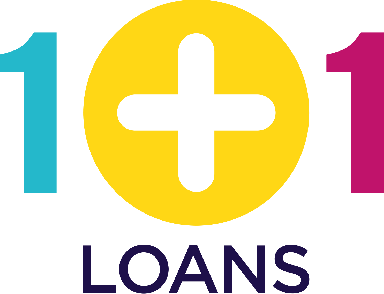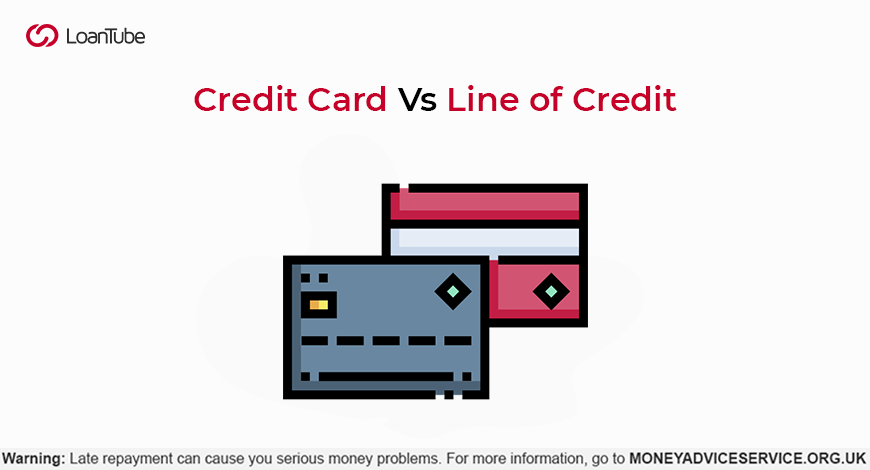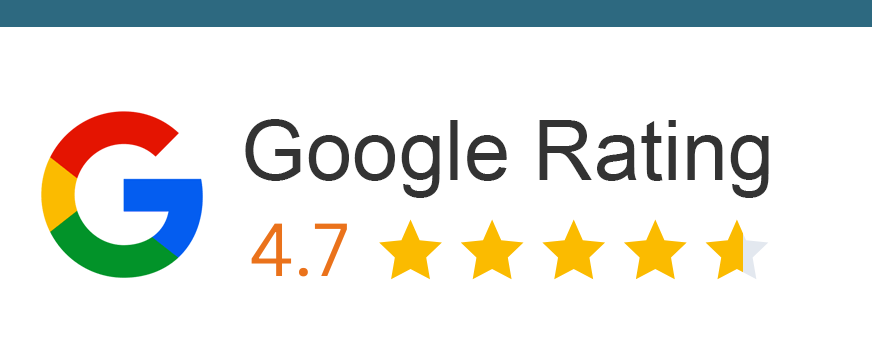Credit card is often used to pay for unplanned or unexpected expenses. You may not be able to access your savings in an emergency to cover the cost of an expense. It may be tempting to borrow credit to pay unexpected costs or fund ventures, but it is crucial to understand the type of credit you would require.
You can choose the best financial product for yourself based on your financial and personal situation. Apart from loans, credit cards are the most popular way to get quick cash. But, Line of Credit is becoming more popular.
Credit cards and Lines of Credit are both types of revolving credit. However, they work in different ways. Continue reading for more information about credit cards and Lines of Credit. Read on to find out the difference between the two.
Maximise your options: Compare and apply for loans below with LoanTube
Apply Filters

Loan Amount
£4000 -
£20000
Norwich Trust
Loan Term
1 -
10 years
4.8/5
Representative APR
31.90%
Minimum Age
21 Years
Representative Example: £12,000 over 66 months, 31.9% APR fixed. Monthly payment £358.22 Annual interest rate 28.01% fixed. Interest payable £11,642.52. Total repayable £23,642.52.

4.8/5
Norwich Trust
Loan Amount
£4000 -
£20000
Loan Term
1 -
10 years
Representative APR
31.90%
Minimum Age
21 Years
Minimum Income
£2000 per month
Representative Example: £12,000 over 66 months, 31.9% APR fixed. Monthly payment £358.22 Annual interest rate 28.01% fixed. Interest payable £11,642.52. Total repayable £23,642.52.

Loan Amount
£5000 -
£100000
Evolution Money Loans
Loan Term
1 -
20 years
4.5/5
Representative APR
28.96%
Minimum Age
18 years
Representative Example: Loan Amount: £20950.00, Loan Term: 85 Months, Interest Rate: 23.00% PA Variable. Monthly Repayments: £537.44. Total Amount Repayable: £45,682.15. This example includes a Product Fee of £2,095.00 (10% of the loan amount) and a Lending Fee of £714.00

4.5/5
Evolution Money Loans
Loan Amount
£5000 -
£100000
Loan Term
1 -
20 years
Representative APR
28.96%
Minimum Age
18 years
Minimum Income
Not mentioned
Representative Example: Loan Amount: £20950.00, Loan Term: 85 Months, Interest Rate: 23.00% PA Variable. Monthly Repayments: £537.44. Total Amount Repayable: £45,682.15. This example includes a Product Fee of £2,095.00 (10% of the loan amount) and a Lending Fee of £714.00

Loan Amount
£1000 -
£10000
1Plus1 Guarantor Loans
Loan Term
1 -
5 years
4.4/5
Representative APR
39.90%
Minimum Age
18 years
Representative Example: Borrowing £3000 over 36 months with a representative APR of 39.9% (variable),the amount payable would be £134.21 a month,with a total cost of credit of £1831.56 and a total amount payable of £4831.56.

4.4/5
1Plus1 Guarantor Loans
Loan Amount
£1000 -
£10000
Loan Term
1 -
5 years
Representative APR
39.90%
Minimum Age
18 years
Minimum Income
Not mentioned
Representative Example: Borrowing £3000 over 36 months with a representative APR of 39.9% (variable),the amount payable would be £134.21 a month,with a total cost of credit of £1831.56 and a total amount payable of £4831.56.
What is a credit card?
- Cards allow you to buy everyday items online, over the phone, or in person using a line of credit. The card can be charged by physically inserting it or swiping it into a terminal, or entering the card number and expiry date into an online payment form. The amount of the purchase will affect the credit available and the account balance.
- You can use credit cards to pay your bills and make online purchases or make online or in-store purchases. Merchants send the details of your credit card to the bank. Once this is done, the merchant sends the details of your card to the bank.
- Credit card companies will provide you with a period before interest is added to the total amount borrowed. The grace period is the period before interest is charged. It is usually between 21 and 28 days.
- A finance charge or fee is added to your account if you fail to pay your entire balance by the end of the grace period. The finance charge will be added to the account based on your interest rate, outstanding balance and other factors.
- The interest rate is the annual interest you pay to borrow money on your credit cards. The interest rate is affected by your credit history, market interest rates and the type of credit card that you have.
What is a Line of Credit?
- Personal loans are often associated with credit cards more than lines of credit. A revolving loan allows you to borrow a specific amount. Instead of getting the whole loan amount in one lump sum, you can withdraw as much as you need. Interest will only be charged for the amount actually used and not the entire amount. To make your payments, you can pay fixed monthly instalments.
- Personal credit lines cannot be guaranteed. To be approved for credit, you may need a checking account at the bank/credit union issuing it. After you have borrowed money, you will be billed each month. The interest rate can be affected by market conditions.
- Home Equity Line of Credit is revolving credit that you can secure with your home equity. Your equity determines the amount you can borrow from the lender. You can use the money as you please. You will not pay interest on the money that you use. HELOC lets you borrow large amounts at low-interest rates. You should be cautious about your repayments as the lender may foreclose your home if you fail to make them on time.
What’s the difference between a Credit Card and a Line of Credit?
- Credit terms and limits: While terms can vary from lender to lender, the APR for a line of credit is generally lower than that for a credit card. Your credit card provider can grant a credit line a greater credit limit than a credit card. Credit lines are better suited to large purchases that you intend to repay over time.
- Access and Rewards: Credit cards make it easy and convenient to purchase regularly. Credit cards often offer grace periods that allow you to avoid interest payments. Line of credit does not provide this option. Credit cards offer rewards such as cashback and other perks that credit lines do not.
- Application requirements: When applying for a credit card, you will need to provide accurate financial information. If you apply for a credit line, documentation will be required to prove income. Credit applications can be time-consuming and more complicated.
Conclusion
A general repayment budget can help you start your borrowing journey. By including your repayments in your budget, you will be able to stay on top of your borrowing and reduce the chance of default. It would be best if you kept up with your repayments. Responsible credit use can help you achieve your goals and improve your credit scores.


